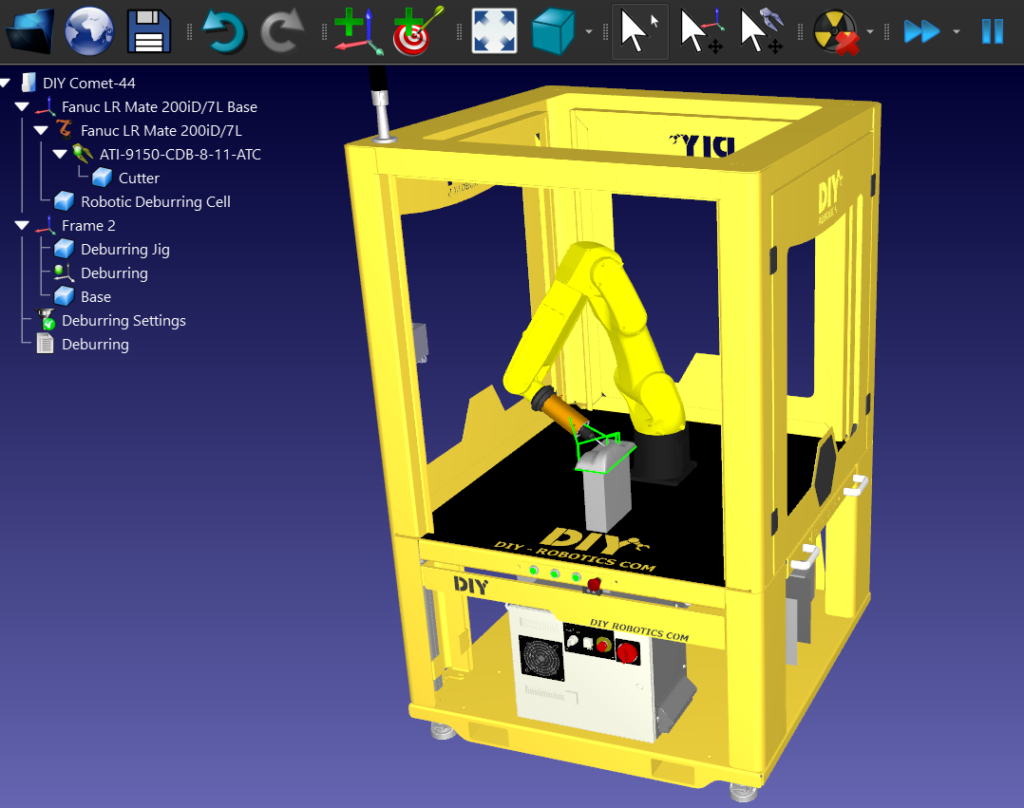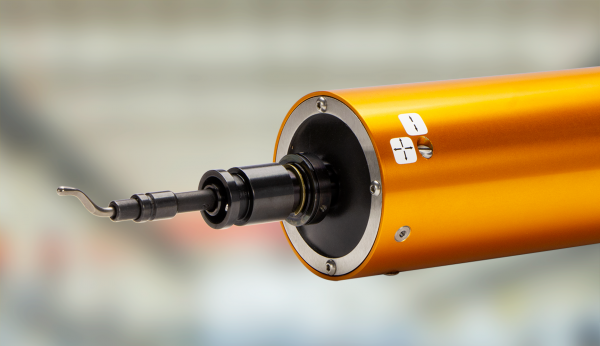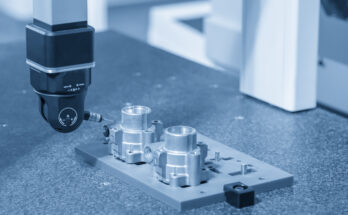What are the best options for robotic deburring?
If you are looking to automate a deburring task in your business, you might be uncertain which tool is the best one for you. There are various options for automated deburring.
Which deburring tool is the easiest to deploy?
There are some great benefits to using robots for deburring. Deburring tasks are dull, dirty, potentially dangerous, and expensive when performed by a human. These are the four hallmarks of a perfect task to give to a robot.
Robots also make deburring tasks more consistent and higher quality. Overall, they improve the productivity of the entire operation.
But, that doesn’t mean robotic deburring is always a perfect solution.
A common problem is that automation can lack flexibility. Compared to a human worker, most robot setups are unable to adapt to changes. Incorporating this flexibility into a robot cell is traditionally complex and expensive.
The Conventional Approach to Deburring Automation
Conventionally, deburring automation takes the form of large deburring machines. These take up a huge amount of space in your facility. They are only suited to particular types of deburring task.
Examples of conventional deburring automation include:
- Edge rounding deburring machines
- Tube deburring machines
- Belt deburring machines
- Brush deburring machines
- Sheet metal deburring machines
If you have multiple deburring tasks, you would probably have to invest in a separate machine for each of them. This becomes very costly very quickly. Not to mention the amount of time it takes to source and deploy the machines in the first place.
These are an example of inflexible deburring automation.
By contrast, human workers are very flexible. People can easily adapt to different deburring tasks. Moreover, they can start working on them immediately. But, they don’t provide the advantages of automation.
Wouldn’t it be great if there was some way to get the benefits of deburring automation combined with the flexibility of a human worker?
Deburring Flexibility + Automation Is Possible
Thankfully, there is a way to achieve highly flexible deburring automation quickly and easily.
Some robotic solutions, using particular deburring tools, can mimic the motions of a human worker with a hand deburring tool. This makes them suitable for a wide range of deburring tasks, not just the single task that conventional deburring machines manage.
With the right robot platform, you can get deburring automation up and running in your facility very quickly. And, with the right programming tool, you can easily program the deburring task even if you have no previous experience with robotics.
The trick is in finding the right robotic platform that will allow you to access these benefits.
A Highly Flexible Deburring Tool for Robotics
Which new tools will help you achieve fully flexible robotic deburring?
One such tool comes from ATI Industrial Automation. We recently teamed up with ATI and DIY-Robotics to create a solution for the quick and easy deployment of robotic deburring.
ATI’s Compliant Deburring Tool provides a more intuitive approach to automated deburring than has been possible in the past. Its compliant tip uses the same standard cutting media that is used in the tools for manual deburring. This allows the robot to mimic the motions of a human arm, making it easier to move from manual to automated deburring.
An advantage of the tool is that it is compatible with a variety of deburring tasks including edge deburring, chamfering, countersinking, and scraping. Its compliance can be modified to suit the specifics of your task.
The tool also comes in three slightly different formats, to suit the needs of the task:
- Compliant Deburring Blade
- Compliant Deburring Blade with Automatic Blade Changer
- Radially-Compliant Deburring Tool
With ATI’s tools, robotic deburring becomes more like human deburring. The deburring robot can achieve a flexibility closer to that of a human worker. Instead of just a single task, the robot can handle various deburring tasks in the business.
How to Get Robotic Deburring Up and Running Quickly
In the past, robots took a long time to deploy into your business. It could take weeks or months to get a new robot up and running. As a result, it was often disrupting production in the process.
What if you are looking to deploy robotic deburring more quickly?
Finally, there is now a solution that lets you get the benefits of robotic deburring in just a few days.
We recently partnered with DIY-Robotics and ATI to produce a modular, off-the-shelf solution for robotic deburring. It combines everything needed for deburring into a self-contained cell. Also, it can be deployed to your facility quickly and easily.

The cell is based around the pre-engineered robotic cells that are the specialty of DIY-Robotics, with the programming power of RoboDK, and ATI’s Compliant Deburring Tool. In addition, it comes shipped as a bundle that can be either deployed in a few days by the provider, or you can deploy it yourself in the time that suits you.
For the first time, the Robotic Deburring Cell opens up flexible deburring to anyone who needs it, regardless of your previous experience with robotics.
Learn More About Easy-to-Deploy Robotic Deburring
Finally, if you’d like to learn more about the Robotic Deburring Cell, the best place to check it out is on DIY-Robotic’s website.
On the page, you can see how each of the 3 components (the cell from DIY-Robotics, ATI’s tool, and RoboDK) combine to create an easy-to-deploy deburring cell that is accessible to anyone.
In fact, all the hardware specifications are listed on the page and you can easily book a consultation to see if the cell might suit your needs.
Click here to learn about the Robotic Deburring Cell.
What would automated deburring mean for your business? Tell us in the comments below or join the discussion on LinkedIn, Twitter, Facebook, Instagram, or in the RoboDK Forum.





Hey, Thanks for sharing a great experience with us. It really informative content that helps to all also share the video it clear all the douts